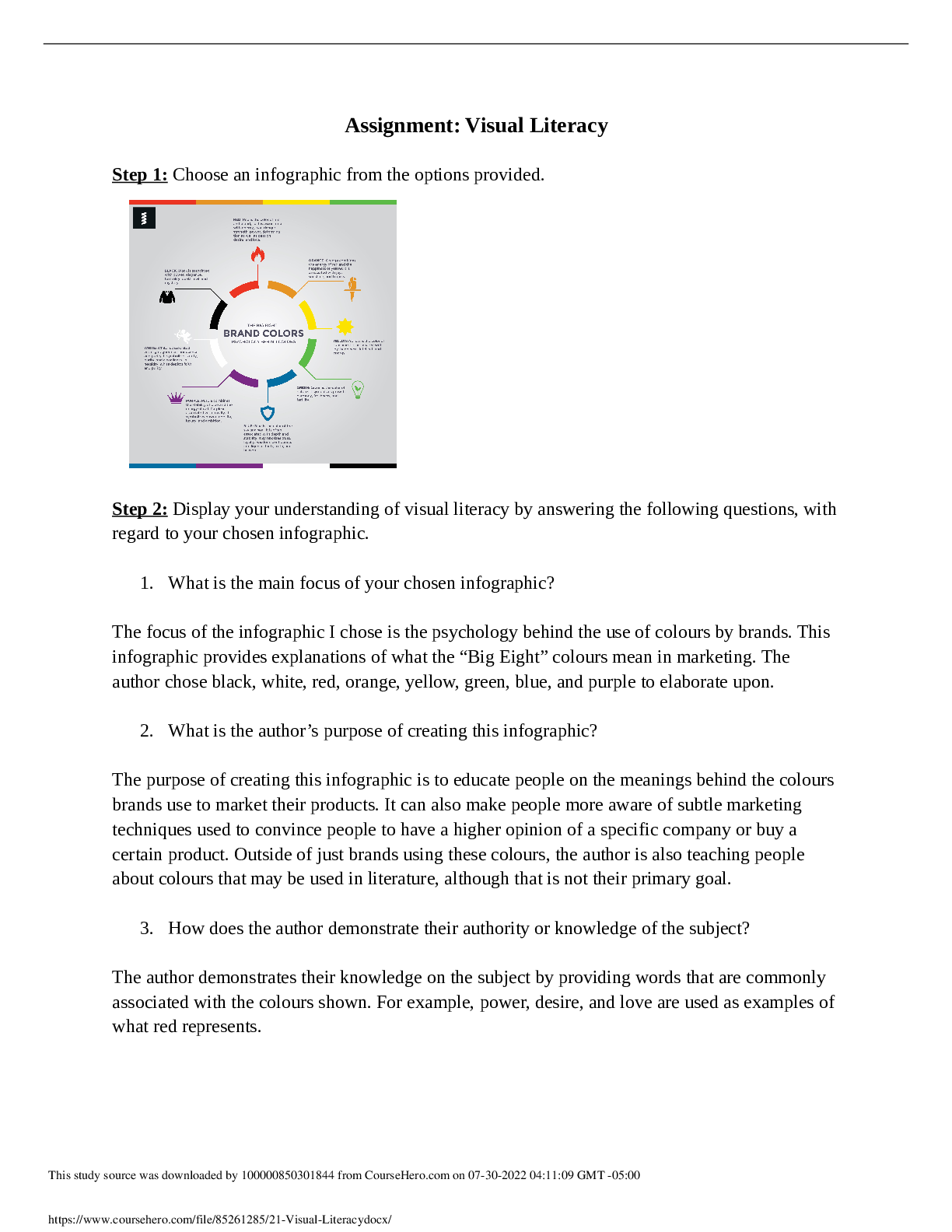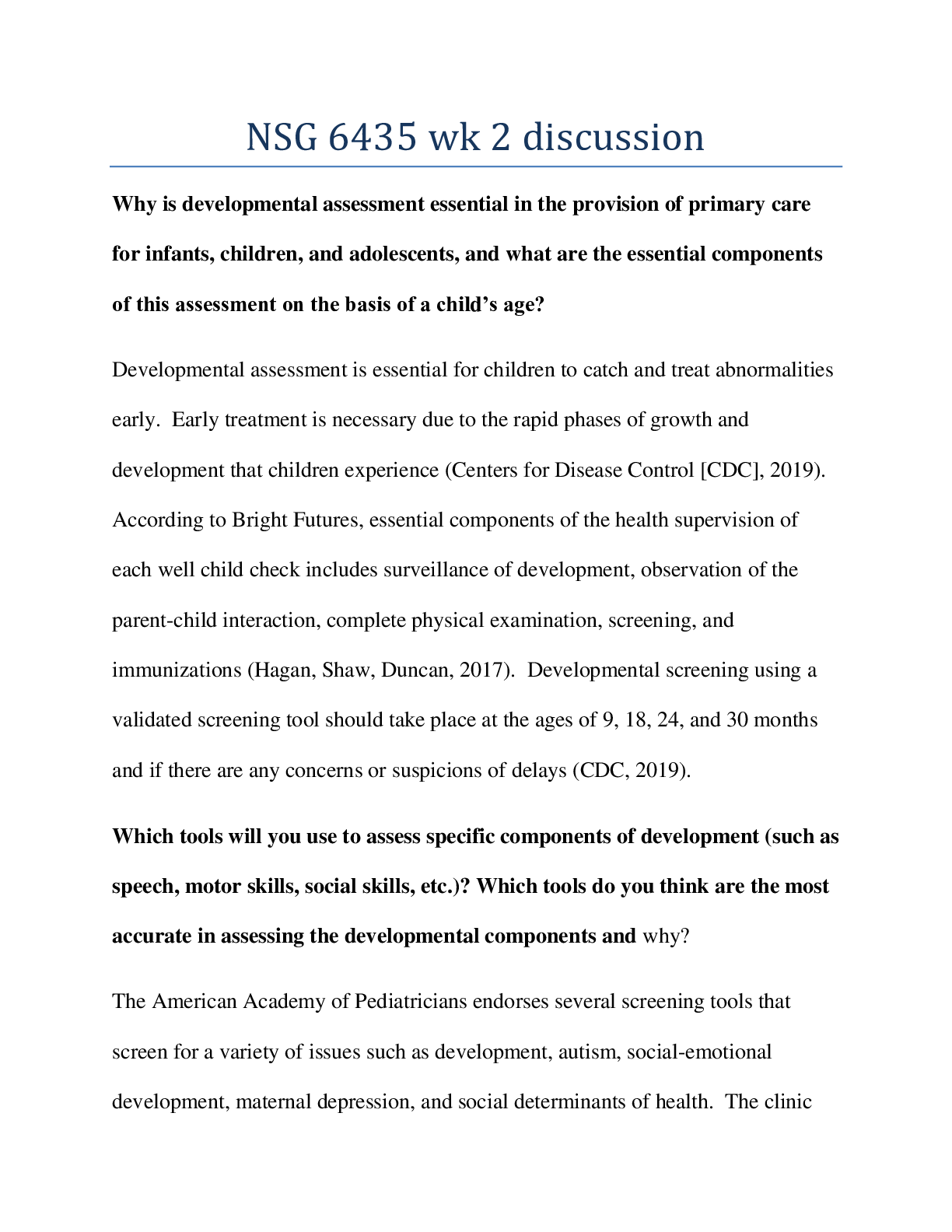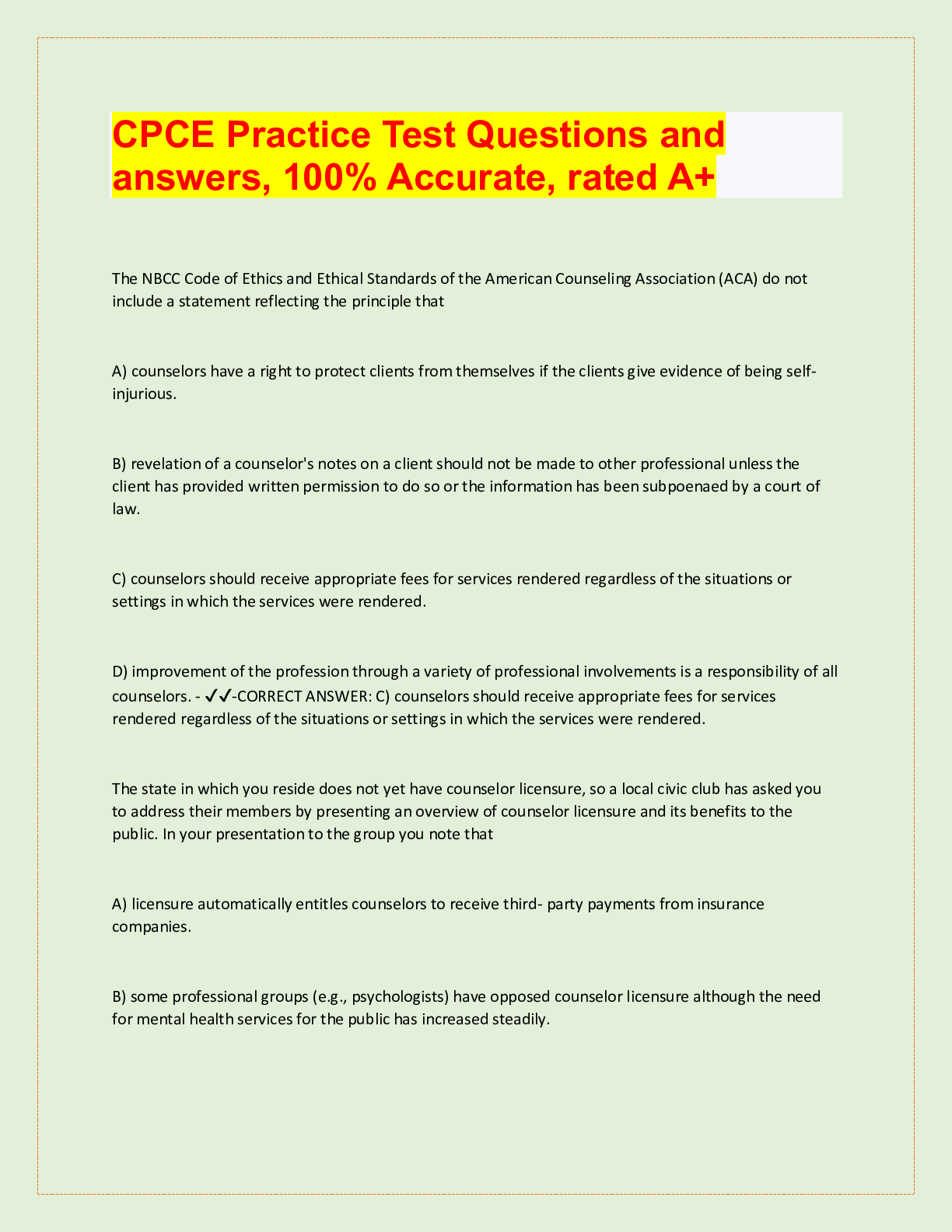Physics > QUESTIONS & ANSWERS > SCIENCE 101 1.4.4 PHYSICS Tests: Atoms and Atomic Theory , Isotopes and the Periodic Table, States o (All)
SCIENCE 101 1.4.4 PHYSICS Tests: Atoms and Atomic Theory , Isotopes and the Periodic Table, States of Matter, Fluid Dynamics and Buoyancy , AND Chemical Bonds. Q&A
Document Content and Description Below
LIST OF QUESTIONS Question 1: Atoms and Atomic Theory (10 points) a. List the three types of particles that make up an atom. Describe each particle based on its charge and location in the atom. (4 ... points) b. How does the number of each type of particle in a chloride ion compare with the number of each type of particle in a chlorine atom? (1 point) c. Compare the number of protons with the number of electrons in a positive ion. (1 point) d. How does an atom become an ion with a -2 charge? (1 point) e. Write one or two sentences to describe Ernest Rutherford's experiment. How was the model he proposed different from the previous model of the atom? Write an additional one or two sentences to describe the evidence on which he based his conclusions. (3 points) Question 2: Isotopes and the Periodic Table (5 points) a. How do two isotopes of an element compare in terms of their numbers of protons? What about their numbers of neutrons? (1 point) b. How do two isotopes of an element compare in terms of their atomic numbers? What about their atomic mass numbers? (1 point) c. What is the atomic number of an atom, and where can you find it on the periodic table? (2 points) d. How many protons, neutrons, and electrons does a neutral atom of uranium-238 have? (1 point) Question 3: Chemical Bonds (10 points) a. Atoms can bond together in several different ways. Identify the type of chemical bonding that occurs in each of the following substances. Explain what happens to electrons in each type of bonding. (3 points) i. KBr ii. Fe iii. CCl4 b. What is special about elements in the far right column of the periodic table? How does this affect their ability to form chemical bonds? (4 points) c. What type of element loses electrons in ionic bonding, and what type of charge will it create? (2 points) d. Why do metals make good electrical conductors? (1 point) Question 4: States of Matter (12 points) a. Compare solids, liquids, and gases in terms of the way each substance's shape changes (or doesn't change) when placed into a different container. Explain each property in terms of the particle arrangement in that state. (3 points) b. A sample of gas is in a rigid container that cannot change volume. Use the kinetic molecular theory to explain how increasing the temperature of the gas will affect the pressure in the container. (2 points) c. Describe the direction in which heat will naturally flow between objects. (1 point) d. Write one or two sentences to compare the internal energy of nitrogen gas, N2, with the internal energy of neon gas, Ne. (1 point) e. Which states of matter will include potential energy from intermolecular forces when measuring their internal energies? (1 point) f. What is the average velocity of atoms in 1.00 mol of neon (a monatomic gas) at 2°C? For m, use 0.0202 kg. (2 points) g. What is the internal energy of 3.00 mol of diatomic nitrogen gas, N2, at 35°C? (2 points) Question 5: Fluid Dynamics and Buoyancy (13 points) a. Water has many unique properties. What are adhesive forces and cohesive forces in water? How does the polarity of a water molecule relate to the strength of its cohesive forces? (2 points) b. Write one or two sentences that summarize Bernoulli's principle. (1 point) c. A force of 3300 N is exerted on a piston that has an area of 0.060 m2. What is the area of a second piston that exerts a force of 9900 N? (2 points) d. Describe an object that floats and an object that sinks in terms of each one's weight and buoyant force. (2 points) e. What happens to the buoyant force as you push an inflated beach ball under the water's surface? Explain your reasoning. (3 points) f. An object floats in both water and oil. Oil is less dense than water. Compare the buoyant force acting on the object in each liquid, then compare the volume of each liquid that is displaced. (2 points) g. How can you use the flow rate equation to help explain why water comes out faster as you put your finger over the end of a hose? (1 point) [Show More]
Last updated: 1 year ago
Preview 1 out of 7 pages

Reviews( 0 )
Document information
Connected school, study & course
About the document
Uploaded On
Aug 11, 2022
Number of pages
7
Written in
Additional information
This document has been written for:
Uploaded
Aug 11, 2022
Downloads
0
Views
60














.png)





.png)


.png)


.png)


.png)

.png)
.png)
.png)


